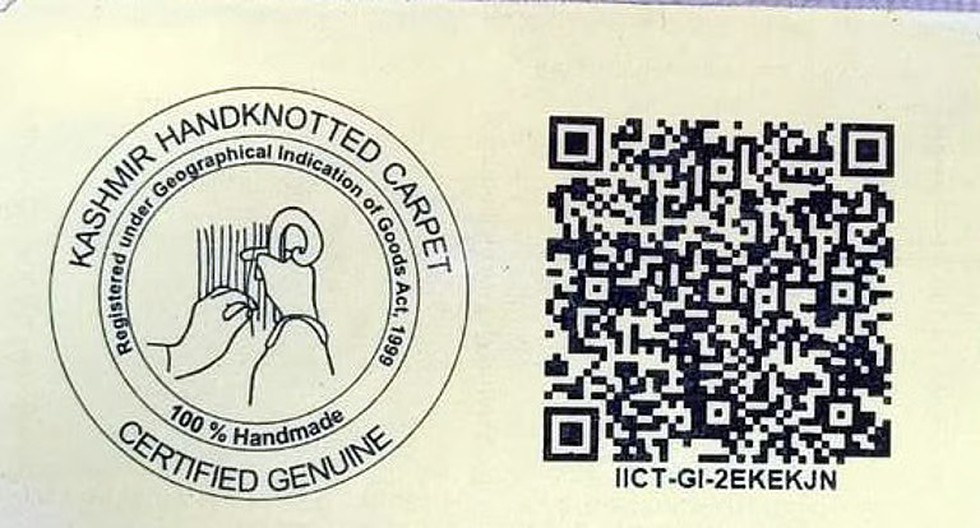About Kashmir Hand-knotted Carpet:
- The origin of hand knotted carpets, locally known as "Kal baffi" dates back to 15th century after which it progressively attained the high degree of perfection.
- It is said that Sultan Zain-ul-Abidin brought carpet weavers from Persia and central Asia in to Kashmir to train the local inhabitants.
- The loom used in Kashmir carpet weaving is composed of two horizontal wooden beams between which the wrap threads are stretched, one beam in front of the weaver and the second behind the first.
- The difference between a carpet and other hand woven rugs lies in the fact that short lengths of the thread or yarn are tied to wrap chains to form the pile of the carpet. These are commonly called knots though it is a loop rather than an actual knot.
- In Kashmir, the primary type of knot used in carpet weaving is called the "Farsi baff" or the "Sehna" knot, which is a Persian system of knotting.
- Very simple tools are used to thread these knots - a wood or a metal comb to push knots and weft tightly together and a pair of short scissors to cut the pile of the carpet to an even form once it is finished.
Other GI tagged Kashmir crafts:
- Apart from the hand-knotted carpet, six other crafts have already been GI registered, which include Papier Mache, Kashmir Pashmina, Kani, Sozni, Khatamband and Walnut Wood Carving.
